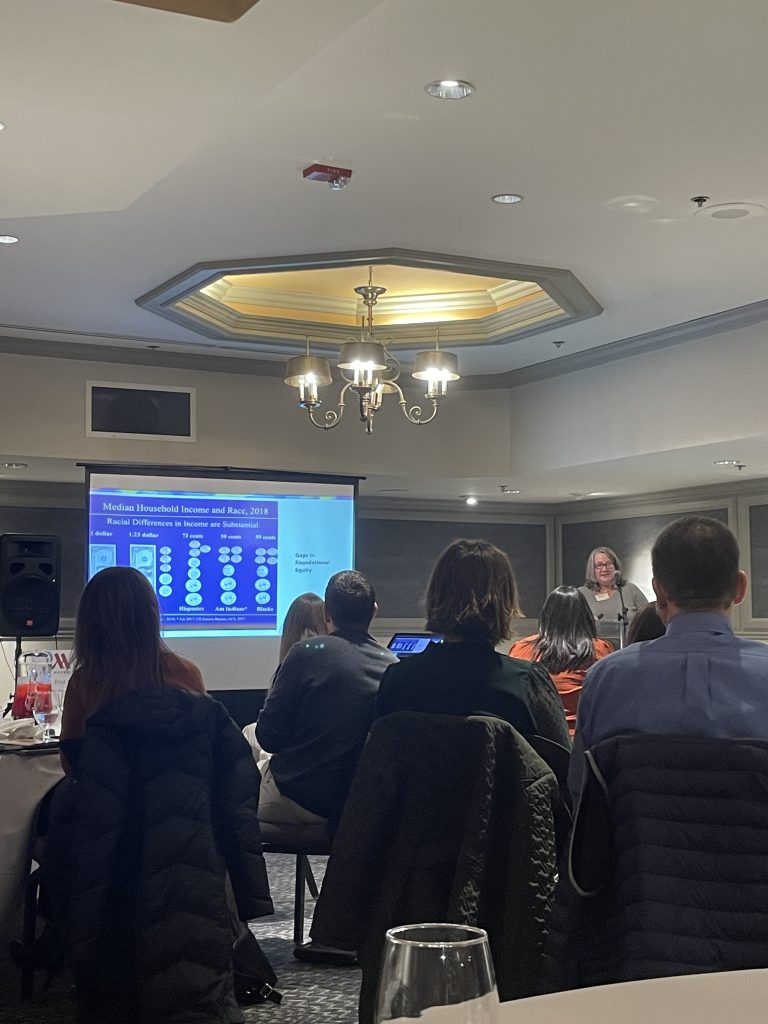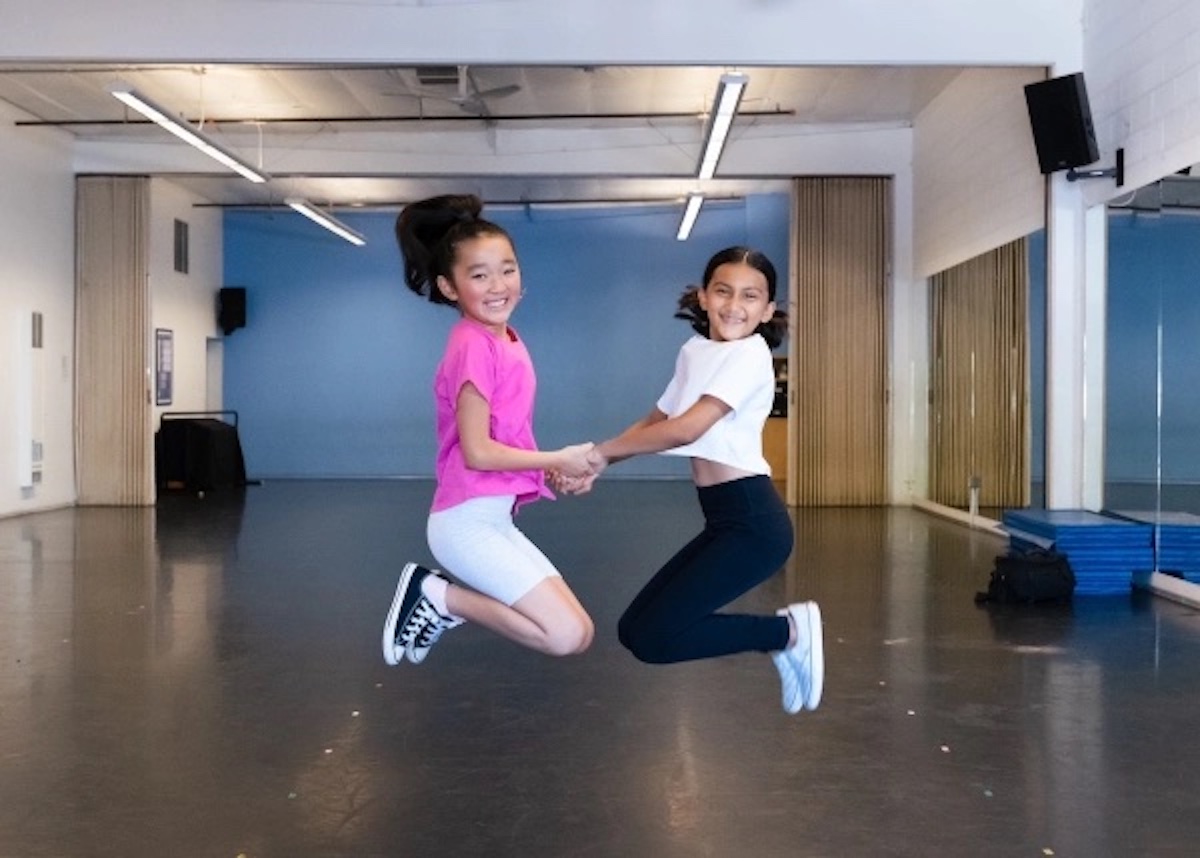More time spent on the playground could mean the difference between flourishing or flunking out for Santa Barbara County’s students. It’s a point that has been echoed repeatedly by researchers and parenting blogs alike: Young children need to play to learn.
As the First 5 Santa Barbara County (the county’s Children and Families Commission) narrows its focus on the concept of school readiness for kids in the first five years of their lives, school board members and school governance teams discussed play as an important method to support early childhood development and future achievement in school during First 5’s biennial conference on February 23.
“The school system is a ‘culture’ that every student becomes a part of for at least 13 years of their life,” said First 5 assistant director Michelle Robertson, “and it’s the second most influential body, just behind the family, that contributes to the development of a person.”
“If school boards can become not only aware, but competent in basic child development and apply that knowledge to how young children actually learn and thrive,” she continued, “then they have the ability to transform the culture of school to differentiate for every unique learner. Only then will our schools be truly inclusive, effective, and allow for children to reach their full potential.”
Role of Play
According to The Powerful Role of Play in Early Education, a book prepared by the California Department of Education, “Play is an important context in which children learn, experiment with new ideas, and make sense of the world around them.”
First 5 has drawn on research by Jeffrey Trawick-Smith, a professor and researcher in early childhood education. In a nutshell, he contends that play includes thinking, social interaction, motor skills, and important opportunities to use language and literacy, which will support children’s social, physical, emotional, and cognitive development and will prepare them for academic learning.

For example, at the conference, a video was shown of a TEDx Talk by Dr. Peter Gray, a researcher in play. Through a survey he conducted of anthropologists who had observed hunter-gatherer cultures in various isolated parts of the world, Gray learned that children in those cultures were free to play all day without any adult guidance, and that they were among the “brightest, happiest, most cooperative, most well-adjusted, most resilient children” that the anthropologists had ever observed anywhere.
“From an evolutionary and biological perspective, play is nature’s means of ensuring that young mammals, including young human beings, acquire the skills that they need to develop successfully into adulthood,” Gray explained.
Other studies have demonstrated that make-believe play, as Trawick-Smith notes, inspires children to use more frequently mature, adult language. When children play games such as house or school, in which they pretend to take on grown-up roles, they not only do their best to imitate how adults speak, but also must use more detailed elaboration to communicate with their playmates than they would with a parent.
One study investigating the play-based preschool curriculum High Scope, Trawick-Smith says, showed that children attending a High Scope classroom for a single year would later in life “show higher earnings, higher employment rates, fewer incarcerations, and higher educational attainment.”
Kindergarten-Ready or Not
Wendy Sims-Moten, First 5 SBC’s executive director who also serves as president of the Santa Barbara Unified School District’s Board of Education, is helping lead the charge toward First 5’s strategic intent: By 2030, they want to ensure that 70 percent of preschool-age children in Santa Barbara County will be kindergarten-ready.
The county has a lot of work to do if it wants to meet that goal; only about 25 percent of children entering kindergarten are ready for the curriculum, according to First 5’s 2022 data brief. Districts in North County had fewer students rated as “Ready to Go” than southern districts.

To measure school readiness, districts from Guadalupe, Lompoc, Santa Maria-Bonita, Santa Barbara, Goleta, and Carpinteria administered the Kindergarten Student Entrance Profile (KSEP) to incoming kindergarten students in fall 2021. The KSEP measures social-emotional and cognitive elements of children’s kindergarten readiness, using teachers’ professional observations in the first three weeks of the school year.
First 5’s current, general plan includes prioritizing areas of engagement and investment to support families, expand access to early educational opportunities, and enrich systems of early child care and education available in Santa Barbara communities. They’ve especially focused on regions with lower scores of school readiness, such as Santa Maria.
A play-centered approach to early learning in Santa Barbara communities just scratches the surface of addressing the cracks in those early childhood foundations and gaps in academic success for the county’s kids.
During the pandemic, students of all ages experienced learning loss, especially in the K-5 range. Of 3rd-5th-grade students, 75 percent did not meet grade-level standards for math in spring 2022, 64 percent did not meet standards for reading, and only 27 percent of kindergarten students met grade-level standards for early literacy. To help remedy this, the Santa Barbara Unified School District is investing $1.3 million in summer school programs at Franklin, Monroe, and McKinley elementary schools.
The achievement gap, which can clearly be seen in many students by the third grade, actually starts much earlier, in the first five years of a child’s life. The 30 percent of students who are English language learners and those from low-income families meet greater challenges in achieving academic standards.
“There are children in Santa Barbara County who have not been to the beach, even though they may live only five miles away … their families don’t have the socioeconomic means to get them there,” Robertson said. “So when they read about a starfish, they don’t know what that means.”
Advice for Educators
In response to not moving the needle in school-readiness in the past 20 years, First 5 is turning its attention toward continued professional development of educators and support for various early learning programs with a special focus on those children who are designated as dual-language learners.
First 5’s February keynote speaker Dr. Susan Walsh, a consultant in early childhood education and professor emeritus at University of La Verne, said educators should “think critically” about their curriculum to better address the needs of young dual-language learners. She said that pre-K influences English learning, and that “rich, investigative play” — such as letting children who are learning about wheels, for example, play with toy cars, explore their environment for objects resembling wheels, and do hands-on projects involving wheels — has been shown to help decrease the risk of a student being a long-term English learner.
A roll call toward the end of the conference brought attention to the number of school districts in attendance, including Santa Barbara, Lompoc, Hope, Carpinteria, Buellton, and Los Olivos. First 5’s Michelle Robertson reminded those attendees to chase their “North Star” of why they decided to pursue a career in public education and encouraged them to “break out of the status quo” and “respect how young children learn.”
Creating curricula based around play and enhancing access to early learning opportunities are just small steps in the path of addressing student success and equity in the county. If Santa Barbara County’s schools are to become what Robertson called “educational hugs” that “respect anyone who walks in,” the community will need to step up and let kids step outside to play.





You must be logged in to post a comment.